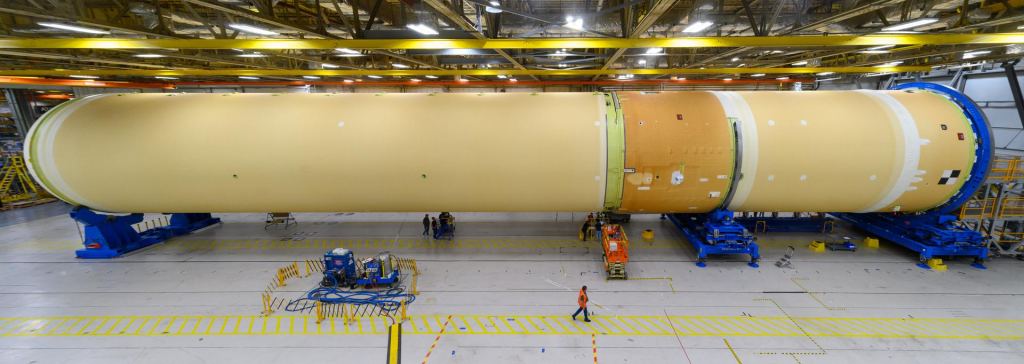We’re Going to see at Least Five More SLS Rockets Launch in the Coming Years
By Laurence Tognetti
NASA’s continued goal of sending humans into deep space using its Space Launch System (SLS) recently took a giant leap as the world’s largest space agency finalized the SLS Stages Production and Evolution Contract worth $3.2 billion with The Boeing Company in Huntsville, Alabama. The purpose of the contract is for Boeing to keep building SLS core and upper stages for future Artemis missions to the Moon and beyond for at least five more SLS launches.
This finalized contract follows initial funding and authorization provided by NASA in October 2019 for Artemis III-related manufacturing, to include cost-efficient bulk purchases, targeted long-lead materials, and core stage work. This new contract phase keeps Boeing working on SLS through July 2028.
“NASA’s Space Launch System rocket is the only rocket capable of sending large cargos and soon, astronauts to the Moon,” John Honeycutt, SLS Program manager, said in a statement. “The SLS core stage is the backbone of NASA’s Moon rocket, producing more than 2 million pounds of thrust at launch, and the addition of the exploration upper stage will enable NASA to support missions to deep space through the 2030s.”
With the recent success of the uncrewed Artemis I mission to the Moon, this finalized contract demonstrates the confidence NASA now has in the SLS rocket to bring humans back to the Moon for the first time since 1972.
Artemis II, the first crewed mission of the Artemis Program, is currently scheduled for launch from the Kennedy Space Center sometime in 2023. The purpose of this mission will be to conduct a complete shakedown of the Orion spacecraft on a four-day trip as it will travel 7400 kilometers (4600 miles) beyond lunar orbit. This will allow the crew to view both the Earth and the Moon from Orion’s many windows, while marking the farthest humans have traveled from the Earth. This mission will be followed by Artemis III, which will land the first woman and person of color on the Moon’s surface.
For Artemis I through III, SLS utilizes an interim cryogenic propulsion stage with only one RL10 engine to propel NASA’s Orion spacecraft to the Moon. But starting with Artemis IV, NASA will be utilizing the SLS Block 1B configuration, which will use the more powerful exploration upper stage (EUS), larger fuel tanks, and four RL10 engines to send both crewed missions and bigger cargos to the lunar surface.
For now, the Artemis II core stage is scheduled for both completion and shipment to the Kennedy Space Center in 2023, with the Artemis III engine section recently shipped to Kennedy onboard NASA’s Pegasus barge, as well.
As stated, no human has visited the Moon since 1972, which happened on Apollo 17. This finalized contract between NASA and Boeing continues to write the history books and open a new chapter for deep space exploration to the Moon and beyond.
How successful will the Artemis missions be to the Moon, and eventually Mars? Only time will tell, and this is why we science!
As always, keep doing science & keep looking up!
The post We’re Going to see at Least Five More SLS Rockets Launch in the Coming Years appeared first on Universe Today.

December 28, 2022 at 09:26AM
via Universe Today read more...

Post a Comment